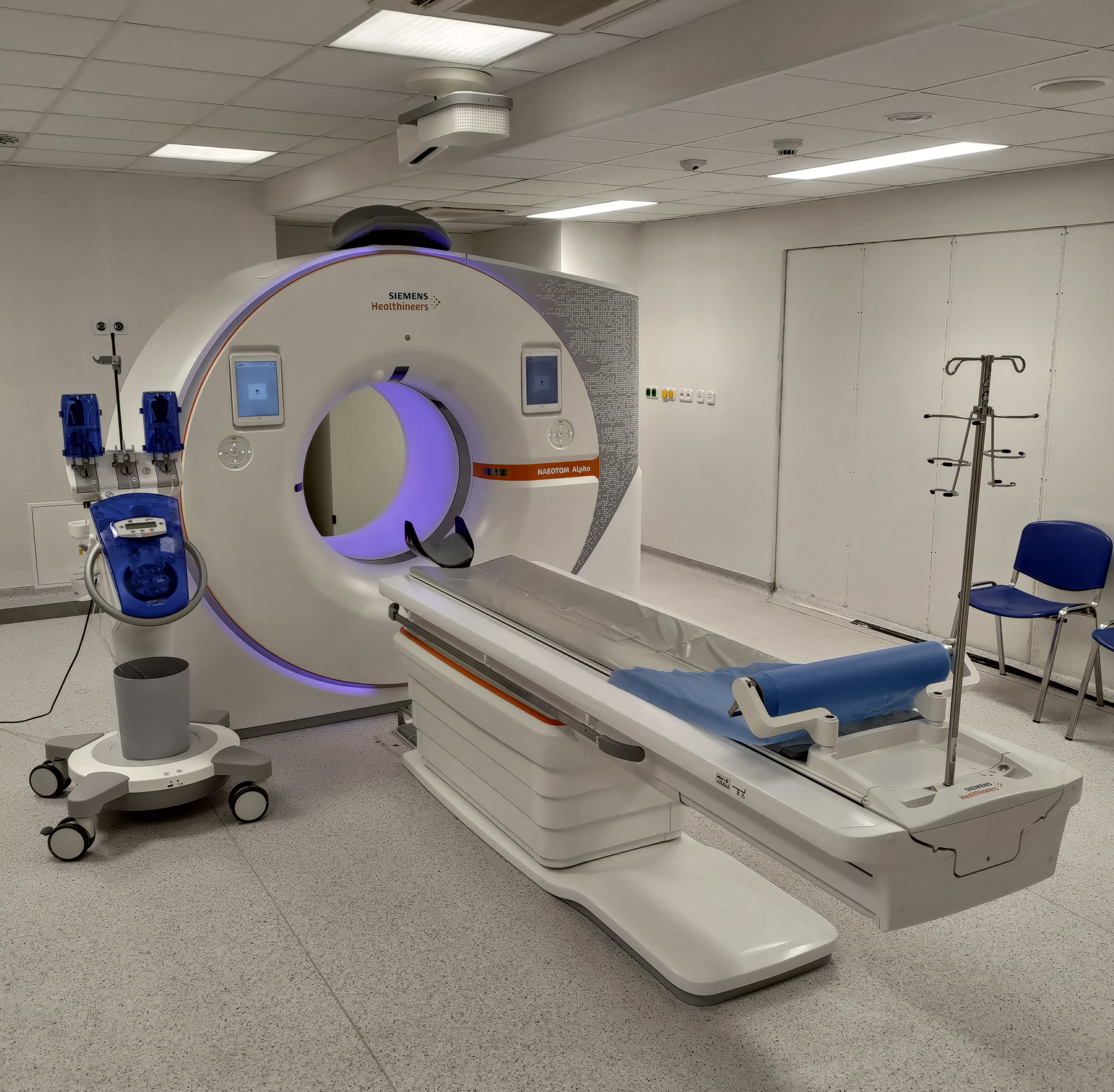All About CT Scan
A CT scan, also known as a computed tomography scan, is a medical imaging procedure that uses X-rays and computer technology to produce detailed cross-sectional images of the body. It allows healthcare professionals to examine various structures, organs, and tissues in the body to aid in diagnosis, treatment planning, and monitoring of certain conditions. Here's some information about CT scans:
How does a CT scan work?
- During a CT scan, the patient lies on a motorized table that moves through a doughnut-shaped machine called a CT scanner. The scanner consists of an X-ray tube that rotates around the patient, emitting X-ray beams. Detectors on the opposite side of the machine measure the amount of X-rays that pass through the body.
- The data collected by the detectors are processed by a computer, which reconstructs the information into detailed cross-sectional images, or slices, of the body. These images can be viewed from different angles and depths to provide a comprehensive view of the area being examined.
Why are CT scans performed?
- CT scans are versatile and can be used to examine different parts of the body, including the head, chest, abdomen, pelvis, and extremities. They are used to evaluate and diagnose various conditions, such as:
- Injuries to bones, joints, and soft tissues
- Internal bleeding or organ damage
- Tumors, including cancerous growths
- Infections or abscesses
- Lung conditions, such as pneumonia or pulmonary embolism
- Blood vessel abnormalities, like aneurysms or blockages
- Brain abnormalities, such as hemorrhages or tumors
- Liver, kidney, or gallbladder diseases
- Spinal conditions, such as herniated discs or spinal stenosis
What to expect during a CT scan?
- Before the scan, you may be asked to remove jewelry, clothing with metal objects, and any other items that could interfere with the imaging.
- You'll lie down on the CT scanner table, which will move through the scanner during the procedure. You may be asked to stay still or hold your breath for a short period to reduce motion artifacts in the images.
- During the scan, you'll be alone in the room, but a technologist will monitor you from a separate control area. You'll be able to communicate with them through an intercom.
- The X-ray tube and detectors in the CT scanner will rotate around you, capturing multiple images from different angles.
- The procedure is painless, but you may hear buzzing or clicking noises from the scanner.
- In some cases, a contrast dye may be used to enhance the visibility of certain structures or blood vessels. The contrast dye may be given orally, intravenously, or through other routes depending on the area being examined.
Are there any risks or side effects?
- CT scans involve exposure to ionizing radiation, although the amount is typically low. The benefits of the scan usually outweigh the potential risks. However, repeated exposure to radiation can increase the risk of certain cancers, so it's important to minimize unnecessary scans, especially for children and pregnant women.
- If contrast dye is used, there's a small risk of an allergic reaction or kidney problems, particularly in individuals with pre-existing kidney disease or allergies.
- It's essential to inform your healthcare provider about any known allergies or kidney issues before the procedure.
After the scan:
- Once the CT scan is complete, you can usually resume your regular activities unless instructed otherwise by your healthcare provider.
- A radiologist will interpret the images and generate a report. Your healthcare provider will discuss the results with you and explain any findings or necessary follow-up steps.
It's important to consult with a healthcare professional for personalized information and advice regarding CT scans, as the specific details and recommendations may vary depending on individual circumstances.


